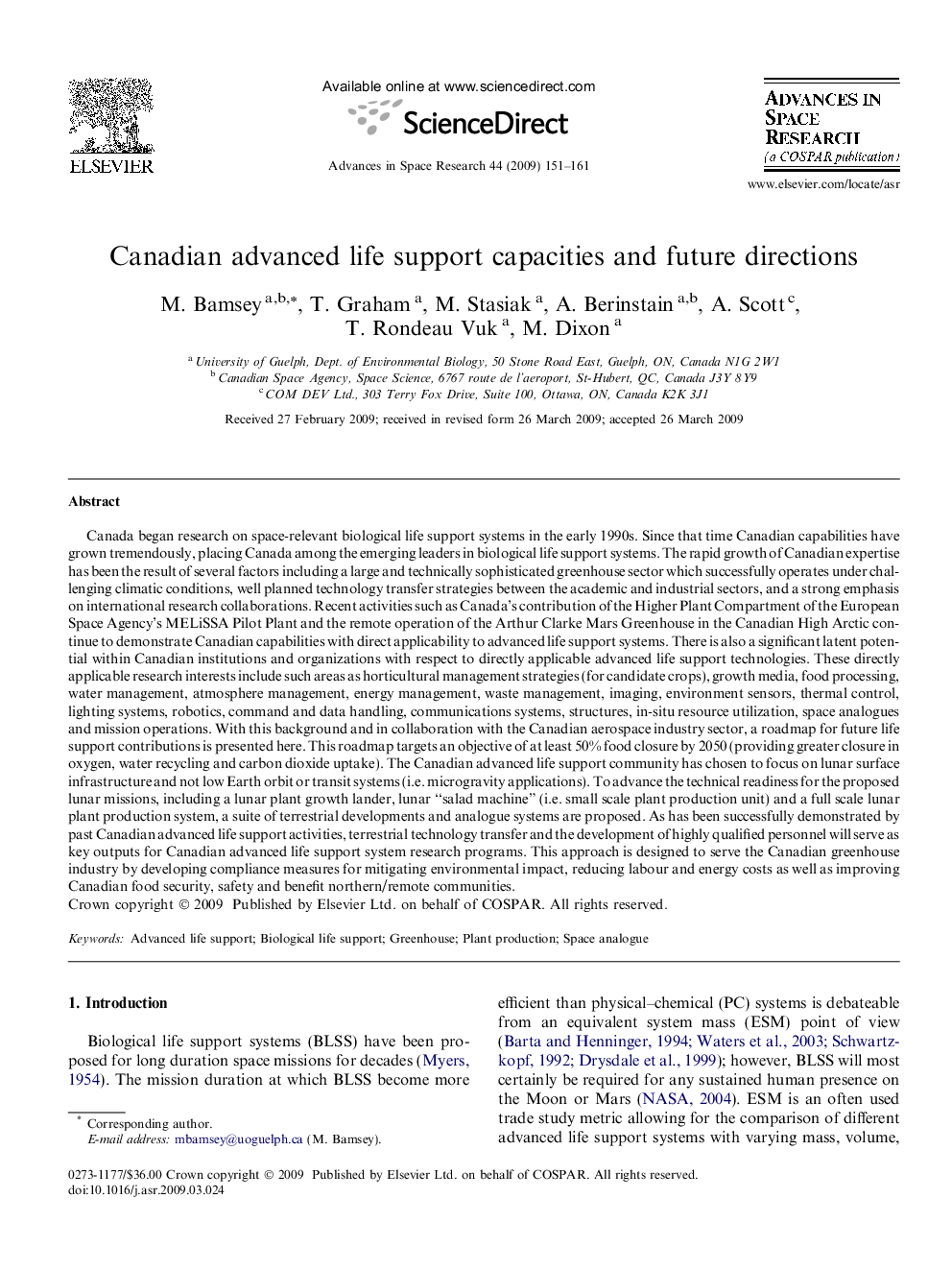| کد مقاله | کد نشریه | سال انتشار | مقاله انگلیسی | نسخه تمام متن |
|---|---|---|---|---|
| 1767163 | 1020179 | 2009 | 11 صفحه PDF | دانلود رایگان |

Canada began research on space-relevant biological life support systems in the early 1990s. Since that time Canadian capabilities have grown tremendously, placing Canada among the emerging leaders in biological life support systems. The rapid growth of Canadian expertise has been the result of several factors including a large and technically sophisticated greenhouse sector which successfully operates under challenging climatic conditions, well planned technology transfer strategies between the academic and industrial sectors, and a strong emphasis on international research collaborations. Recent activities such as Canada’s contribution of the Higher Plant Compartment of the European Space Agency’s MELiSSA Pilot Plant and the remote operation of the Arthur Clarke Mars Greenhouse in the Canadian High Arctic continue to demonstrate Canadian capabilities with direct applicability to advanced life support systems. There is also a significant latent potential within Canadian institutions and organizations with respect to directly applicable advanced life support technologies. These directly applicable research interests include such areas as horticultural management strategies (for candidate crops), growth media, food processing, water management, atmosphere management, energy management, waste management, imaging, environment sensors, thermal control, lighting systems, robotics, command and data handling, communications systems, structures, in-situ resource utilization, space analogues and mission operations. With this background and in collaboration with the Canadian aerospace industry sector, a roadmap for future life support contributions is presented here. This roadmap targets an objective of at least 50% food closure by 2050 (providing greater closure in oxygen, water recycling and carbon dioxide uptake). The Canadian advanced life support community has chosen to focus on lunar surface infrastructure and not low Earth orbit or transit systems (i.e. microgravity applications). To advance the technical readiness for the proposed lunar missions, including a lunar plant growth lander, lunar “salad machine” (i.e. small scale plant production unit) and a full scale lunar plant production system, a suite of terrestrial developments and analogue systems are proposed. As has been successfully demonstrated by past Canadian advanced life support activities, terrestrial technology transfer and the development of highly qualified personnel will serve as key outputs for Canadian advanced life support system research programs. This approach is designed to serve the Canadian greenhouse industry by developing compliance measures for mitigating environmental impact, reducing labour and energy costs as well as improving Canadian food security, safety and benefit northern/remote communities.
Journal: Advances in Space Research - Volume 44, Issue 2, 15 July 2009, Pages 151–161